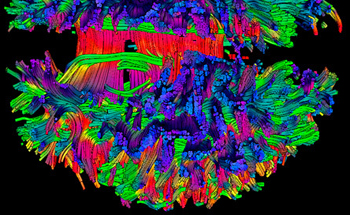Why we love a good human story in communications – the science

If my years spent in TV journalism taught me anything it was that people love a good story, and according to Paul J. Zak*, recent scientific studies are putting a much finer point on just how a well-constructed narrative can change our attitudes, beliefs, and behaviors. 
In a recent blog for the Harvard Business Review Zak explains how his lab measured the brain activity of people watching movies, and discovered that a neurochemical called oxytocin is our key “it’s safe to approach others” signal.
Oxytocin is produced when we are trusted or shown a kindness, and it motivates cooperation with others. It does this by enhancing the sense of empathy, our ability to experience others’ emotions. Empathy is important for social creatures because it allows us to understand how others are likely to react to a situation, including those with whom we work.
They discovered that, in order to motivate a desire to help others, a story must first sustain attention by developing tension during the narrative. If the story is able to create that tension then it is likely that attentive viewers will come to share the emotions of the characters in it, and after it ends, likely to continue mimicking the feelings and behaviors of those characters.
A ‘tension’ can be evoked by any number of different emotions; a good friend of mine describes these moments as ‘ooh’, ‘ahh’, ‘tee hee’ or ‘yuk’ – so surprise, cuddly/warm, funny or a bit diusgusting!! I describe these moments as the attention-grabbers in a presentation that maintain the attention of the audience – and every presentation should contain at least one – ideally rolled nicely into a story.
Zak goes on to explain that his experiments demonstrate that
character-driven stories with emotional content result in a better understanding of the key points a speaker wishes to make and enable better recall of these points weeks later.
For example, telling the real story of how your company helped another by asking them to explain the pain they were suffering before they engaged your services is a far more effective promotional tool than one of your sales team describing the features and benefits. Viewers will empathise with their situation and feel the way they felt. Of course they will also feel the relief when your company provided a solution.
Remember that your company has it’s own story too. Telling people why the company was started and demonstrating the passion of the original directors will give potential customers an insight into the essence or ethos that underpins everything you do. Your story becomes one about people and feelings rather than products and services, which is more compelling and will lead to a greater level of engagement from your audience.
So the next time you are creating a communication to either customers or staff –
Tell the Real Story
*- Paul J Zak is founding Director of the Center for Neuroeconomics Studies & professor of Economics at Claremont Graduate University. Read his full article here

Leave a Reply